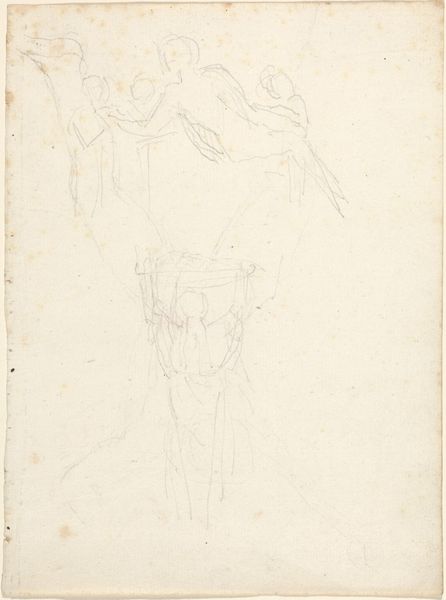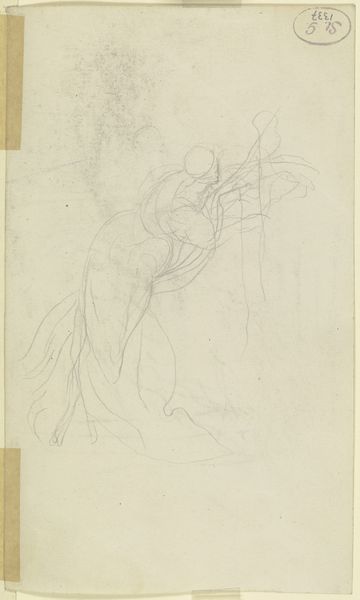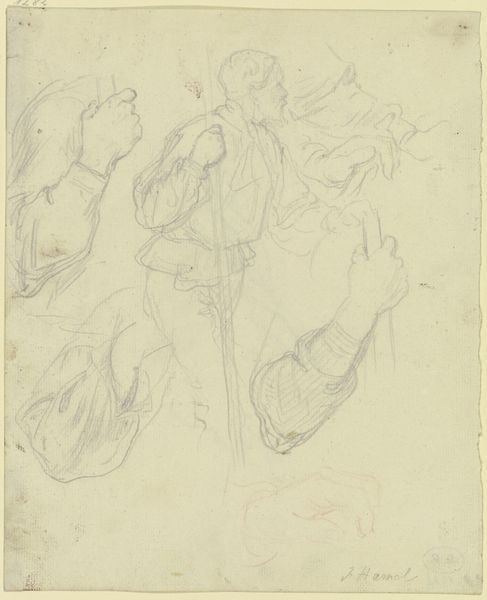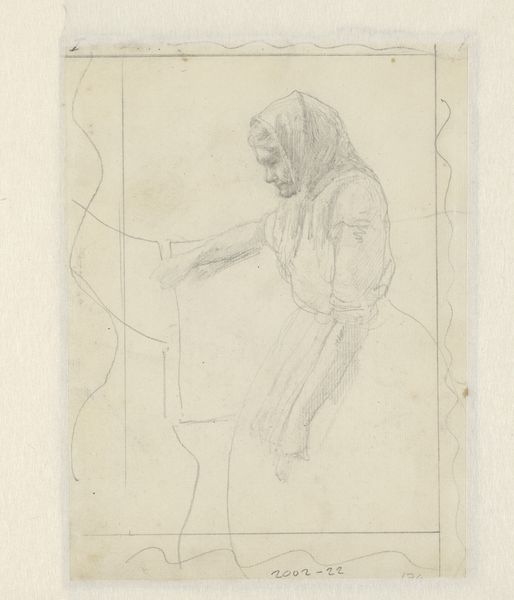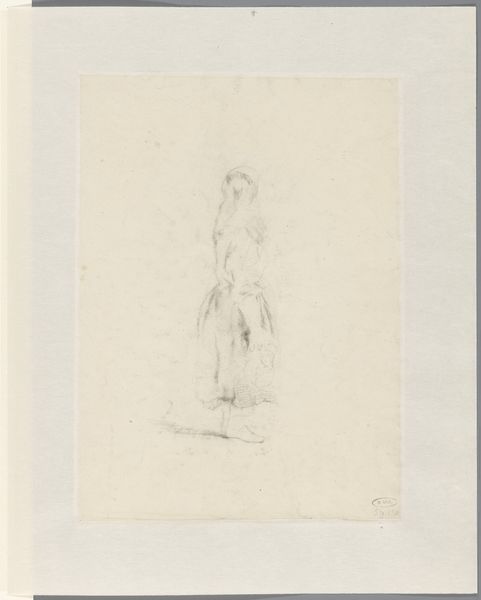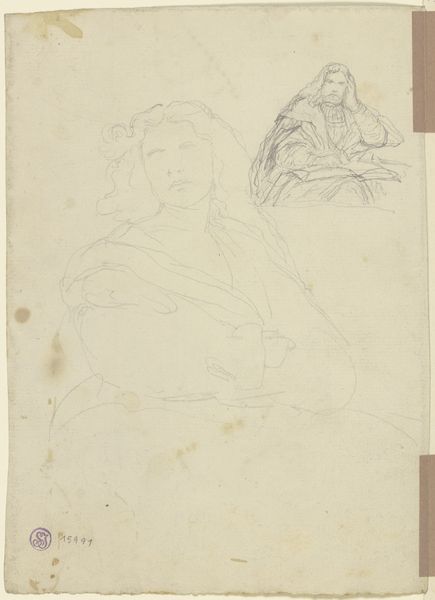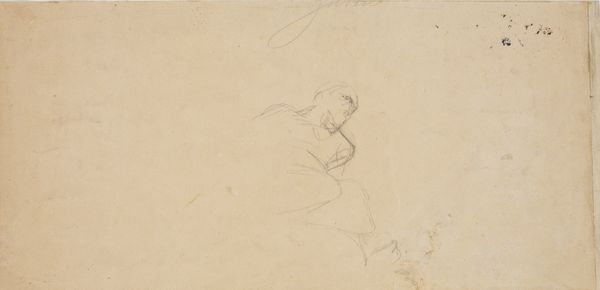
Dimensions: height 223 mm, width 180 mm
Copyright: Rijks Museum: Open Domain
Curator: This drawing, titled "Ruiter te paard," meaning Horse Rider, is attributed to Dirk Langendijk and was likely created between 1758 and 1805. It’s a delicate pencil sketch on paper, housed here at the Rijksmuseum. Editor: It strikes me as ghostly – ethereal, even. The rider and horse seem to emerge from the very page, rendered in the faintest of lines. Is it a study, perhaps? Curator: Precisely. It seems like a page from a sketchbook, judging by the light pencil work. Look closer – you can see how Langendijk used a minimal approach to portray the rider, seemingly focusing on the overall dynamic and form rather than detailed individual features. There's an economy of line, isn't there? Editor: There is. And the hatched lines, they suggest shadow, movement. Given the time period, would he be consciously referencing earlier masters in his handling of light, do you think? Who was he thinking of when creating it? Curator: Undoubtedly. He certainly seemed to look at examples set by Dutch Golden Age artists. One aspect often overlooked is the paper itself. The drawing isn’t on bright white paper, it is in toned paper. What do you feel that choice communicates? Editor: The toned paper gives it an antique feel, immediately placing it within a certain historical context, evoking a sense of faded glory. It subtly suggests that the image belongs to a bygone era. Maybe Langendijk used the old paper deliberately. What did portraits of this time convey in a broader sense? What stories are these artworks trying to tell us about a world far away? Curator: Ah, but "stories" imply a fixed narrative. I see portraits more as potent visual signifiers reflecting the shifting societal values during a historical context of upheaval, from aristocratic privilege towards emergent national identities and the rise of a middle class, and of evolving perceptions and expectations. The symbolism lies more in those subtle shifts and claims to power. This horse rider as the power that roams free, independent and superior, still an idealized image even as the tides turned and democratic ideals gained prominence. Editor: I get your reading. Perhaps my approach is broader, searching in an image as much as reading of its era. Either way, I like that ghostly touch and ethereal composition and all the stories one can read in this horseman as a symbolic vehicle of a moment of transitions. Curator: An intriguing sketch indeed, offering much to contemplate. Editor: Absolutely. It invites us to see both the fragility and the enduring power of the past, all at once.
Comments
No comments
Be the first to comment and join the conversation on the ultimate creative platform.


